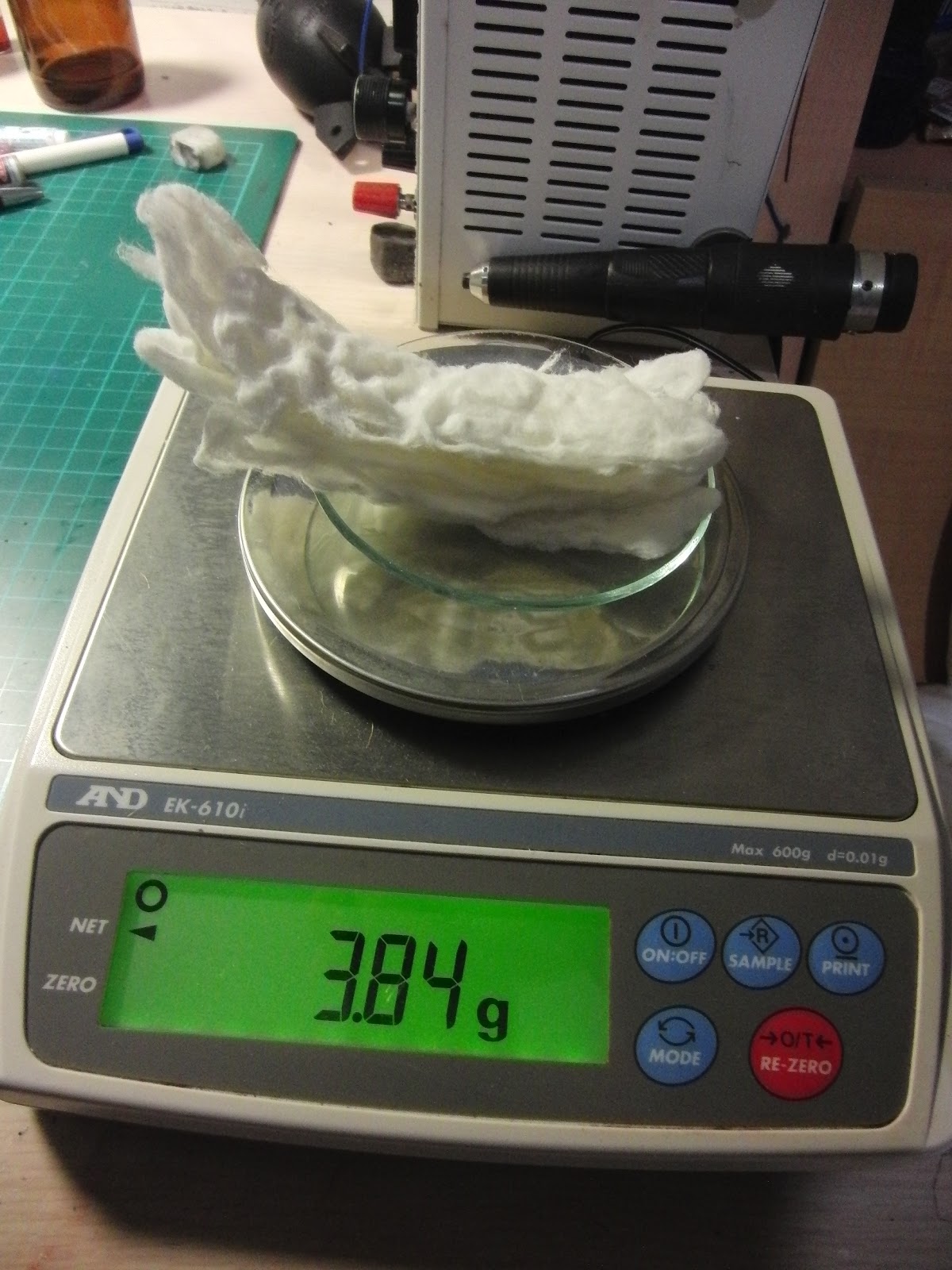Nitrocellulose is a highly flammable
compound formed by nitrating cellulose through exposure to nitric acid or
another powerful nitrating agent. When used as a propellant or low-order explosive,
it was originally known as guncotton. Nitrocellulose plasticized by camphor was used by Kodak, and other suppliers, from the late 1880s as a film base in photograph, X-ray films
and motion picture films; and was known as nitrate film. After numerous fires caused by unstable nitrate
films, safety film started to be used from the 1930s in the case of X-ray stock
and from 1948 for motion picture film.
Units of Nitrocellulose
Units of Nitrocellulose in 3D
In this experiment, we are going to use a
strong nitrating agent, Sulfonitric Mixed Acid. In the SNMA (Sulfonitric Mixed Acid),
NO2+ ion is a very strong acid, and it would react with –OH
group and from –O-NO2 group. The nitro group is a strong oxidizing group,
it makes organic compound burns faster and even explode.
The
reactions of the SMA are as follow:
Reaction of the SNMA:
Reaction of NO2+ with
R-OH:
Side Reaction:
Mix the two acid together is quite an
exothermic reaction To prevent the nitric acid decomposes into NO2
and sulfuric acid decompose the cellulose, keep the temperature of mixture below
5℃.
Chemical
1.
Cotton wool: ~2g
2.
70% nitric acid: 25mL
3.
98% sulfuric acid: 25mL
4.
NaHCO3 saturated solution:
~ 200mL
5.
Clean water: ~ 1L
Procedure
1.
Place 25mL 70% nitric acid into
a Erlenmeyer flask and put it in an ice bath to cool down below 5℃.
The Erlenmeyer flask an nitric acid ice bath
2.
Add 25mL 98% sulfuric acid into
the flask gently, and stir it thoroughly. Stand the mixture about a minute to let more
NO2+ from. Notice the temperature of the mixed acid
should not excess 5℃.
The Sulfonitric Mixed Acid looks a little yellow
3.
Place 2.17g cotton ball in the
mixed acid, and insure the cotton is totally soaked in the mixed acid (squeeze
the air out inside the cotton ball with a glass rob).
Cotton wool in the SNMA, this yellow color is because of Sulfonation but not decomposition of the cellulose
4.
Let the cotton reacts about 20
minutes(also <5℃ or the cotton would turn yellow because of the decomposition that
sulfuric acid caused).
5.
Decant the mixed acid out, and
pour some iced water into the Erlenmeyer flask to wash the acid inside cotton.
Shake the Erlenmeyer flask to insure the water really defuse in the cotton.
Repeat the step 2~3 times.
Decant the mixed acid out
Use clean water wash the cotton
The cotton wool turn back to white because of the side reaction
6.
Use some saturated NaHCO3(baking
soda) solution to wash the cotton until no more bubbles form.
Saturated soda water
Bubbles are forming
The solution stop bubbling
7.
Use plenty clean water to wash
the cotton until the pH value of the water-cotton mixture is located under
6.80~7.20
Wash it times and times
It has a perfect pH value
8.
Squeeze water out from the
cotton, and put the cotton in a desiccator.
9.
Weight the cotton, and figure
out the assay, percentage of nitrogen
The dried final preduct, 94.2% nitrocellulose.
Testing
Analysis
|
Weight of Cotton Wool
|
2.17g
|
|
pH Value of the mixture of water-cotton
|
6.88~7.01
|
|
Weight of Product(Theory)
|
2.17 * (297(g/mole)/162(g/mole))
= 3.98g
|
|
Weight of dried final product
|
3.81 g
|
|
Percentage of NC (nitrocellulose)
[Set the X=mole of NC
3.81g = (162 * (2.17/162-X)+ 297*X)
=> X= 0.0121
(0.0121/0.0134)*100%
= 94.2% ]
|
94.2%
|
|
Percentage of Nitrogen(by weight)
|
13.3%
|
|
Grade:
|
Explosive
|


















do you know if nitrocellulose can be ignited in a container that can keep an such high pressure, that it can detonate by initiation of flame?
ReplyDelete-antiswattt3
Yes, it can. It makes very high pressure in a sealed container. But if you want to ignite it easier, you could purify and reshape the nitrocellulose by acetone.
Delete